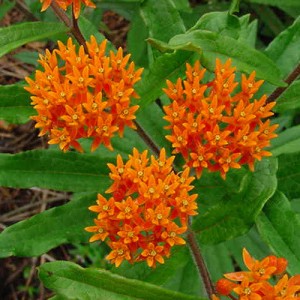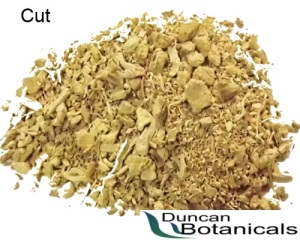
The flowers of the butterfly weed fairly leap out at you this time of the year. This unobtrusive relative of the milkweed is practically invisible until it blooms. The plant is smaller than milkweed with more narrow leaves, but the more garish flowers are really flat clusters of tightly packed tiny five petaled orange to yellow blossoms with elaborate structures around the anthers. In contrast, milkweed flowers are loose cymes of pinkish-white blossoms. In both species, the flowers are small, perhaps a quarter of an inch long, so it is the bright color and density that sets the butterfly weed apart.
True to its name, the butterfly weed does attract butterflies, but it doesn’t have the exclusive relationship with a species like the one between the monarch and the milkweed. Asclepias tuberosa attracts monarchs, but it also attracts bumblebees, eastern tiger swallowtails, fritillaries, hairstreaks, honeybees, painted ladies, pipevine swallowtails, and other species.
There are over 140 species of milkweeds. The genus name comes from the Greek god Asclepius, who is associated with healing. The common milkweed, Asclepias syriaca, is the preferred food of the monarch butterfly in the northeast U.S. That species exudes a white latex—the so-called “milk”—from its leaves when they are broken, while A. tuberosa does not and its leaves are much narrower, so they can be told apart readily even when not in flower. A. tuberosa more closely resembles the lanceolate milkweed, so named for its narrower leaves, but that species exudes white latex as well.

Butterfly weed is fond of growing in full sunlight and sandy, dry soil, which explains its regular presence along the roadways of Martha’s Vineyard. Its showy flowers and propensity for attracting (humming)birds, bees and butterflies makes it a popular ornamental. It grows well from seed, but make take a while to establish itself. It may not flower until it is two or three years old. Once it is ensconced, however, it is quite hardy. It is difficult to transplant because it has a taproot. Fully grown plants can be three feet tall. The stems are hairy and the lanceolate leaves grow in a spiral arrangement around the central stem. The seed pods are long and spindle-shaped and valued for dried flower arrangements.

Butterfly weed has many vernacular names and one of them—pleurisy root—refers to its medicinal use. Pleurisy is an inflammation of the lining around the lungs. A. tuberosa roots are the source of asclepiadin, which effective as an expectorant—it makes you cough—and reduction of inflammation. It greatly reduces the pain of the infection. The roots are powdered and a teaspoon is added to boiling water that is then drunk as a tea. It is often combined with angelica or sassafras to produce perspiration as well.
The part of the root used medicinally is spindle-shaped with a knotty crown. It is sold in a dried form in pieces one to six inches long. The taste is bitter and disagreeable.
So because it attractive to look at, easy to grow, attractive to wildlife, and medicinally useful, much of the information that you find on the internet about A. tuberosa is about how to grow it. Seeds can be sown in November, but better success is possible by cold stratifying the seeds in the spring. Sprinkle the seeds on one half of a moist paper towel and fold the other half over them. But the layered arrangement in a plastic bag and put it in the refrigerator for about a month. Sow the seeds after the final frost and they will germinate within a couple of days. You can also plant the seed indoors in the spring after cold stratification and then plant the seedlings outside.

You must be logged in to post a comment.